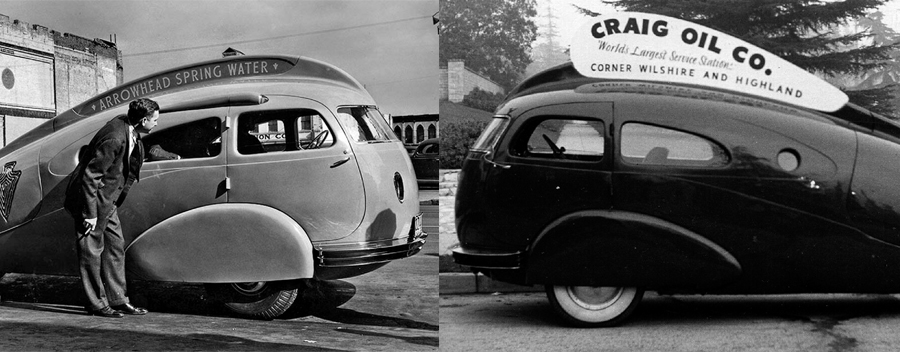
On The Left – The 1937 Arrowhead Teardrop. On the Right – the 1946 Craig Oil Company Teardrop
Hi Gang…
Bob Cunningham and I were on the phone last night for over an hour. He had found a photo confirming that a car we thought was lost in 1937 resurfaced in a newer photo than ever seen before. Now those of you who know me may think that “lost cars” are common to me and that finding another “clue” is just another day. And if you think this – you would nearly be right – except for the car in today’s story – the 1937 Arrowhead Teardrop Car designed by W.E. Miller.

Oct. 2, 1936: Arrowhead Teardrop three wheel car. Photo found in LA Times Archive but appears to not have been published.
Bob and I have been hunting the history on lost teardrop designs across America going on 20 years. These designs are mostly from the pre-war years, and finding new information about any of these cars is not commonplace. After all, most of the information we are looking for is now 80 to 90 years old.
I asked Bob if he would be willing to share his thoughts in a story here with us at Undiscovered Classics and 24 hours later I’m honored to share Bob’s story with you. Take it away Bob..
WHO REALLY DESIGNED THE ARROWHEAD TEAR-DROP, AND WHERE IS IT NOW?
By Robert D. Cunningham
According to conventional wisdom, the radically streamlined Arrowhead Tear-Drop Car was designed in 1936 by prolific automobile stylist W. Everett Miller, and it was wrecked beyond repair the following spring. Closer examination of the facts suggests otherwise, on both counts.
The Arrowhead Tear-Drop was created at a time when streamlining – the art of designing a form that presents very little resistance to a flow of air or water, increasing speed and ease of movement – was all the rage. It was a somewhat misguided result of aeronautical and automotive sciences converging.
The tear drop shape was an engineering solution as well. Builders of the first horseless carriages had experimented with engine location. Some put it under the seat where it wouldn’t be seen. A few mounted it in the rear where its heat and fumes were less objectionable. But most put it up front to replace the horse, now obsolete. As engines became larger, drivers craned their necks to see over massive hoods that extended five, six, seven and more feet ahead.
By the 1930s, boxy body corners gave way to voluptuous curves until futurist designers and engineers envisioned an entirely new style of automobile — a rear-engine tear drop that would slice through the wind as it rocketed down the highway. Additionally the tear drop would provide better visibility, more interior room, greater comfort, improved safety and less engine noise.
According to Robert D. Potter, an automotive writer of the day, the problem was how to move the engine to the rear while the buyer had his back turned. He asked, “If your dealer tried to sell you a car with its engine in the rear end where your weekend luggage is now, would you buy it?”
The Society of Automotive Engineers addressed the dilemma during a 1931 meeting in White Sulphur Springs, West Virginia. The consensus was that the ideal automobile body would be shaped like “the perfectly formed tear falling from a movie actress’s eye”. There were a few dissenters, including William Bushnell Stout who looked to the lowly turtle for inspiration, offering his Scarab in 1932. But most automobile designers and engineers toyed with the form of a finless fish, and their tear drop prophesy continued throughout the decade.
Meet Wellington Everett Miller
Perhaps the most widely publicized tear drop was the three-wheeled Arrowhead Tear-Drop Car. Its design was credited to Wellington Everett Miller, who had been born in November 1904 and became a mechanic’s apprentice by age 14. He was learning the art of automobile design and drafting via a correspondence course when he landed a job with the famous coachbuilder Walter M. Murphy Co. of Pasadena. There he brushed shoulders with the legendary John Tjaarda, a Hollywood coachbuilder whose name would later be associated with the 1936 Lincoln Zephyr, one of the most successful applications of streamlining.
After leaving Murphy in 1925 Miller amassed an impressive portfolio with forward-thinking stylings for Harry Miller, Vickers, Hollywood Motor Bodies, General Motors, Packard and Bohman & Schwartz. His growing reputation earned a brief interview in the December 10, 1935 edition of The Los Angeles Times where the 30-year-old advocated for greater automotive streamlining. “Why not design an automobile for passengers instead of for an engine?” he asked as he displayed several of his illustrations for the photographer.
“When a car crashes head-on,” Miller said, “the heavy engine stops short, throwing the passengers through the windshield. If the engine were in the rear, it would retard the actual crash movement, causing the car frame to crumple and reduce the prospect of injury to the riders.”
Arrowhead Tear-Drop Car details
In 1936 Miller joined the Advance Auto Body Company, in Los Angeles where he breathed life into his streamline fantasies. The most radical of these designs was the Arrowhead Tear-Drop Car commissioned by the Arrowhead Spring Drinking Water Company, with the company name proudly displayed on a vertical ridge that ran the length of the roof, illuminated by six hidden neon tubes.
At 75 inches wide and 80 inches tall, the oversized aquamarine blue goldfish was 204 inches long with a 125-inch wheelbase rolling on a 6-inch tubular steel frame. An eight-cylinder water-cooled engine mounted in the rear provided power and the car’s tail opened like an alligator’s mouth to provide access to the engine.
Arrowhead-shaped holes trimmed in chrome and illuminated in red via complexly concentric neon coils on each side of the massive engine cover provided cooling, and hot air escaped through small holes in a circular pattern at the rear. A single steerable rear wheel that allowed the car to turn 360 degrees within its own length must have been difficult for its pilots to master. Hydraulic brakes operated on all three wheels.
Two passengers rode comfortably in the back seat while the Arrowhead driver sat front-and-center in a leather upholstered, lounge-style chair with chromium arm rests. The instrument panel was fully adorned with an overabundance of gauges, including speedometer, ammeter, radiator thermometer, tachometer, airplane compass, electric clock, catalin lights and fitments, oil gauge, gasoline gauge, atmospheric thermometer, grade meter, altimeter, barometer and radio dial. Parking lights mounted in spears above the side windows were formed of Prystal—a type of ground glass.
Narrow Woodlights, generally found on the fronts of Ruxtons and other luxury cars of the late 1920s, were cleverly mounted flush with the front of the car.
Arrowhead’s poetic advertising text described the Tear-Drop as “The Car of 1960”:
As if from the pages of H.G. Wells’ ‘Things to Come’ glides this car of the future—effortlessly, silently, swiftly. Its air-horns ask pleasantly for the right-of-way; and then through traffic, teeming with the most modern of automotive transportation, moves this glistening man-made machine. From its blunt nose to its tapered tail it bespeaks the Future! In design, safety, comfort and beauty it sets a goal yet to be attained in ordinary passenger cars. Nothing like it has ever before been built. It’s the newest, most modern car of the day,—forerunner of things to come.
An early demise
The curiosity served Arrowhead’s marketing needs very well attracting thousands of spectators as it began its promotional tours. Photographs of the amazing Tear-Drop Car began to appear in newspapers in October 1936. But the tour was cut short the following spring when a horrific accident peeled back the car’s roof. The June 1937 issue of Automobile Trade Journal published a photo. The damage was reportedly irreparable and the car met an ignominious demise.
Discrepancies Arise
The story you have just read is entirely true – except the beginning and the end. Further scrutiny suggests someone else conceived the Arrowhead Tear-Drop design, and the car actually accumulated many more miles beyond its reported expiration.
Historians often put the final punctuation on the Arrowhead story by saying it was featured on the cover of MOTOR magazine. But the issue was published in November 1935, at least two months before Miller joined Advance Auto Body and nearly a year before the Arrowhead Tear-Drop began its promotional tours.
The magazine cover was the work of commercial illustrator Arthur Radebaugh, a self-proclaimed futurist who probably completed the work a month or two before the publication date in order to meet the printing deadline.
Granted, there was nothing new about fish-shaped streamliners by this time; the world had been introduced to the Martin Aerodynamic and Autoette, the Dymaxion, Arrow Plane, McQuay-Norris, Mars Express, Lightning Bug and others. But each of those tear drop designs was distinct. However the Radebaugh and Miller designs were too similar to be coincidental, including the three-wheel configuration, long driving-light pods along the roofline, and small portholes behind the rear quarter windows.
Two explanations are plausible:
1) Art Radebaugh saw, and was inspired by, W. Everett Miller’s designs, or
2) vice-versa. Radebaugh lived in Detroit and Miller was in Los Angeles, so it would have been difficult for one to look over the other’s shoulder. On the other hand, the November 1935 issue of MOTOR could have been found in nearly every American automobile dealership, body shop and filling station before the Arrowhead tendered its commission. The order of events indicates Miller “borrowed” Radebaugh’s design.
According to an article in the February 1937 issue of Ford Dealer & Service Field, The Tear-Drop Car “was the result of an idea conceived by The McCarthy Co., Advertising Counselors of Los Angeles, California, for its client the Arrowhead Spring Water Co.” So perhaps the scenario was this: McCarthy and Arrowhead had a conversation about having a custom car or truck built to promote its product.
Someone plopped the November 1935 issue of MOTOR on the table and said, “What about something like this?” A consensus was achieved and talk turned to finding a coachbuilder capable of such an unconventional design. Fortunately someone remembered seeing the December 10, 1935 edition of The Los Angeles Times featuring Miller holding drawings of his streamliners. A meeting with Advance Auto Body was set up and the McCarthy ad men, with MOTOR magazine in hand told Miller, “My client wants this one. Can you build it?”
Did The Arrowhead Survive?
And what about the car being wrecked beyond repair? The evidence against that unhappy ending is irrefutable. A beautiful period photograph of the reconstructed Arrowhead Tear-Drop Car has surfaced. Its coat of light blue paint is replaced with a darker shade. Its long light pods along the roofline are gone, as are the intricately crafted arrowhead-shaped ventilation louvers, meaning the entire top was rebuilt, including the massive tail/engine cover.
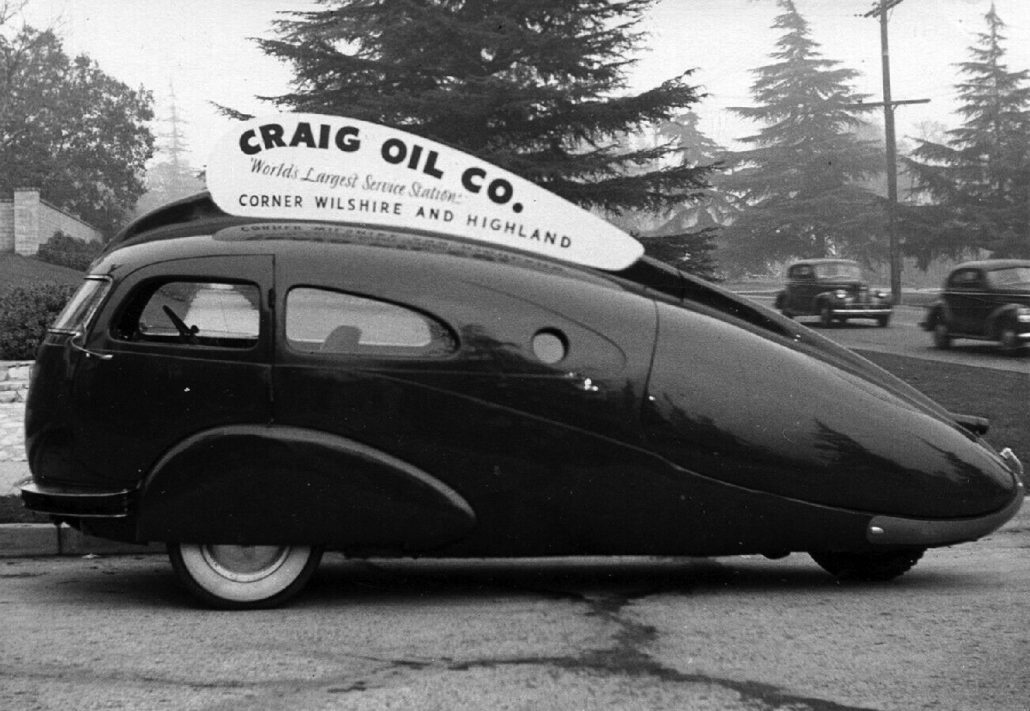
This photo had to have been taken after May 29, 1946 which is the date that the “World’s Largest Service Station” opened – as identified on the sign on the top of the teardrop car.
Did Arrowhead pay for the repairs? Not likely, since there’s no record of the promotional tour resuming. Plus, all references to the Arrowhead name and logo were removed. So who had the financial wherewithal to resurrect the Tear-Drop? Perhaps a clue lies in the advertising placard promoting “Craig Oil Company, ‘World’s Largest Service Station,’ corner of Wilshire and Highland” in Los Angeles.
The Craig connection
John W. Craig had operated more than 100 service stations in Pennsylvania before moving to the West Coast, where he built a number of “Super Service Stations” in the San Francisco Bay area. Newspaper reports said Craig and his general manager, Carl Goetze, were on hand for the grand opening at the massive new 24-pump Wilshire and Highland location featured on the Tear-Drop’s advertising placard. Described as “a typical Hollywood festival”, the event took place on May 29, 1946, more than nine years after the car’s reported demise!
So this newly surfaced photograph proves the Arrowhead Tear-Drop was drivable sometime between May 1946 when Craig opened at Wilshire and Highland, and 1952 when he sold his businesses to the Sunset & Golden Eagle Oil Co. But is the car still around?
Upon his death, Craig bequeathed his Beverly Hills home and a massive trust fund to his daughter, who also enjoyed the benefit of money left for her by her late grandmother, Mrs. Eugene Dubois La Tourette. According to court records, the entire fortune was spent by 1970 the heiress was employed as a part-time bookkeeper. If the Craig family ever owned the Arrowhead Tear-Drop Car, it was surely sold by then.
As recently as the 1980s, an Arrowhead executive says he spotted the Tear-Drop on a flatbed truck in Los Angeles, but it was gone when he returned for a closer look. The story was generally dismissed as a “fish tale” – the one that got away – but this newly discovered photograph has spurred our intrepid Undiscovered Classics sleuth to investigate further.
Professor Hacker, your hook is baited and we can’t wait to see what you reel in!
Summary:
Ok gang….the challenge is on. Can we find this new version of the Arrowhead Teardrop car? It was last seen in 1946 but we’ve found cars again and again that were thought lost.
Click Here To Learn More About Our Track Record Finding Lost and Long-Forgotten Cars
So can we find it? Will you find it? What happened to this newer version from 1946? Let’s hope one of our Undiscovered Classics aficionados knows. Go get ’em gang
Those of you interested in further information can click on the links below
Click Here To Learn More About “Streamlined Dreams” – Teardrop Cars of the 30s and 40s
Click Here To Read More Stories Authored by Bob Cunningham
Hope you enjoyed the story, and remember…
The adventure continues here at Undiscovered Classics.
Geoff
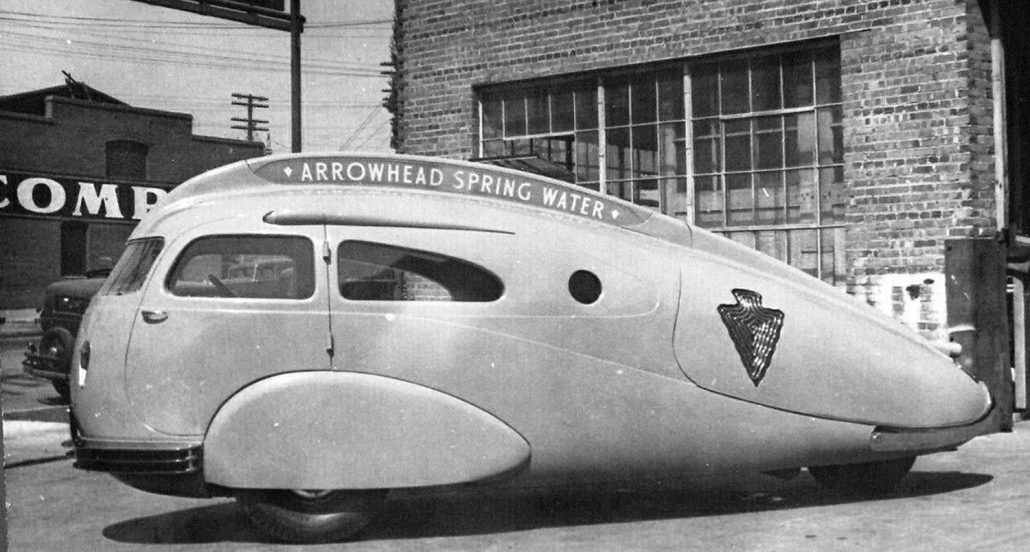
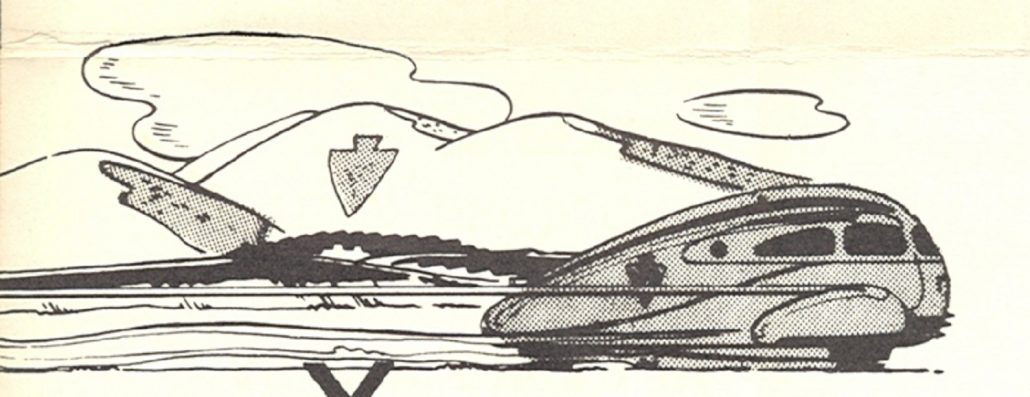


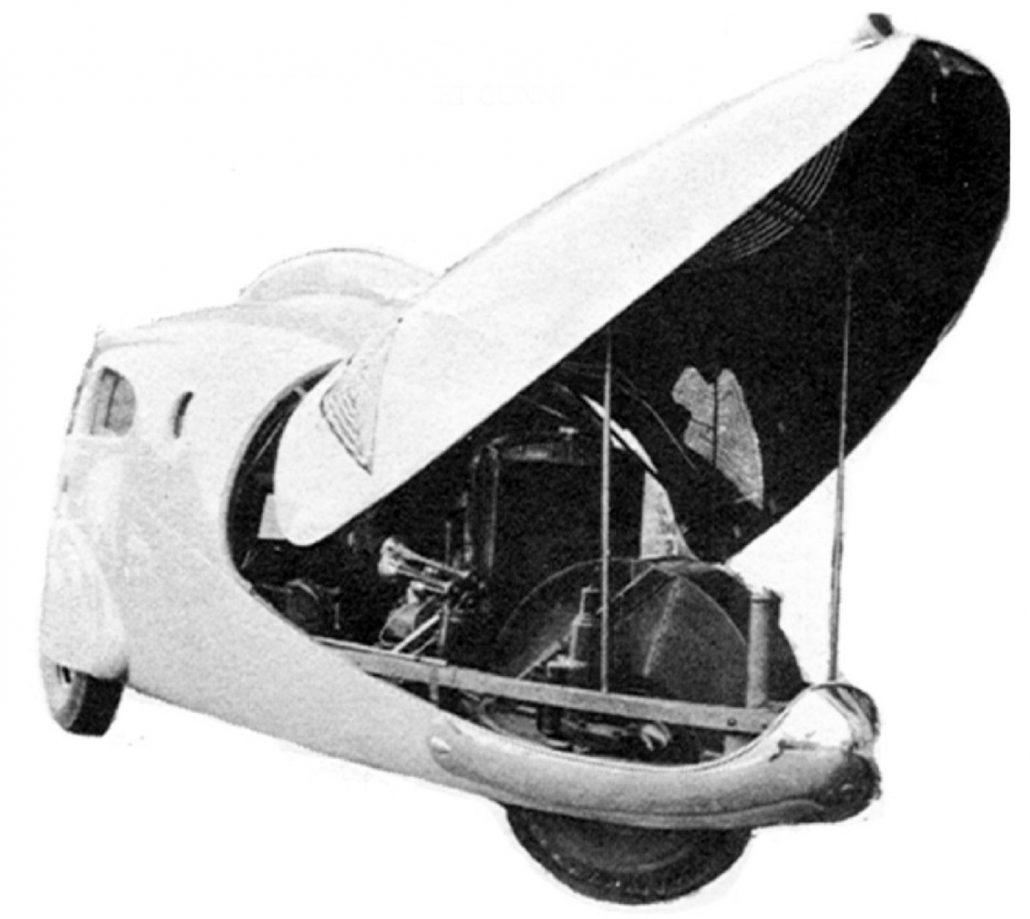
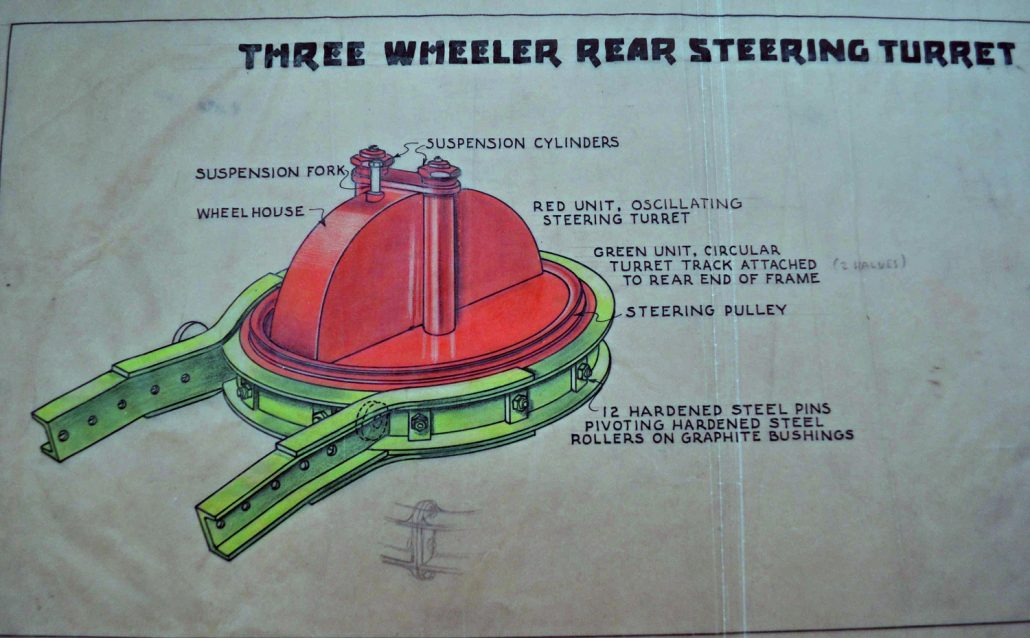
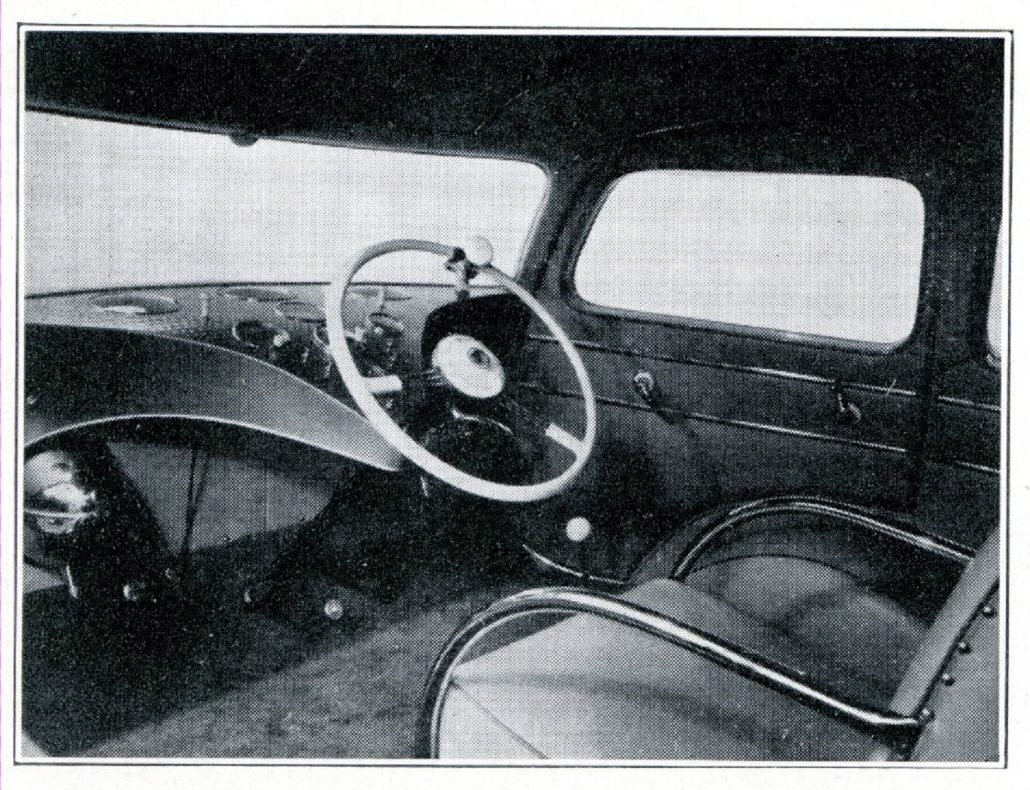
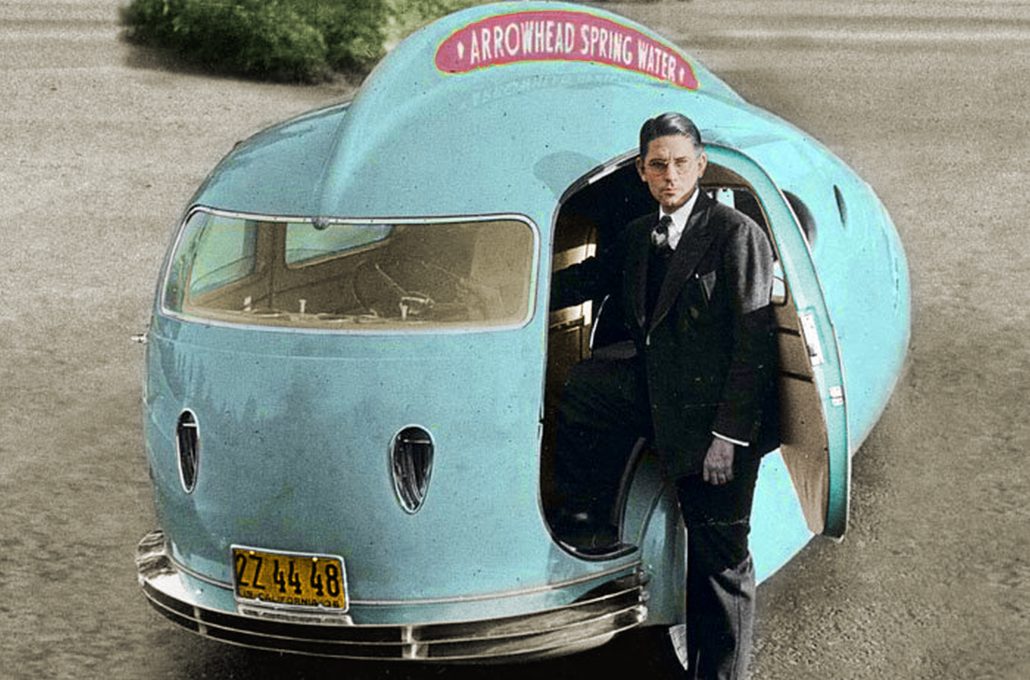
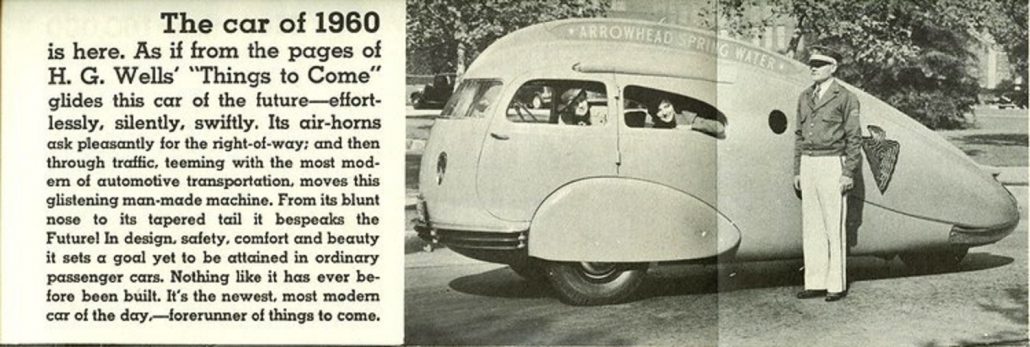
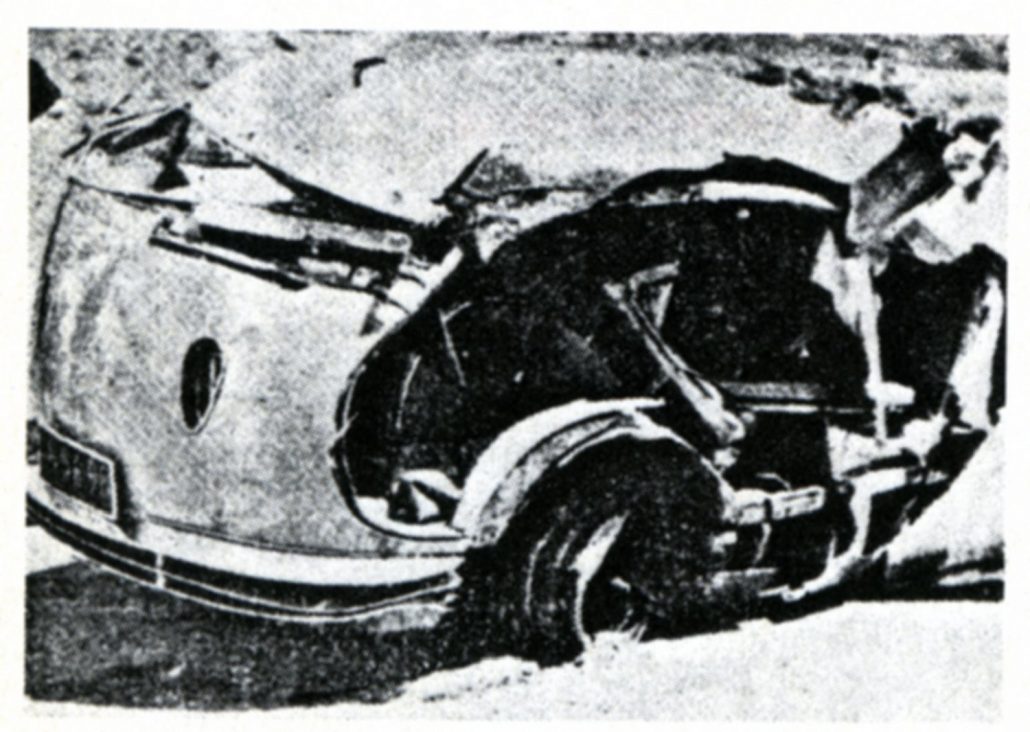
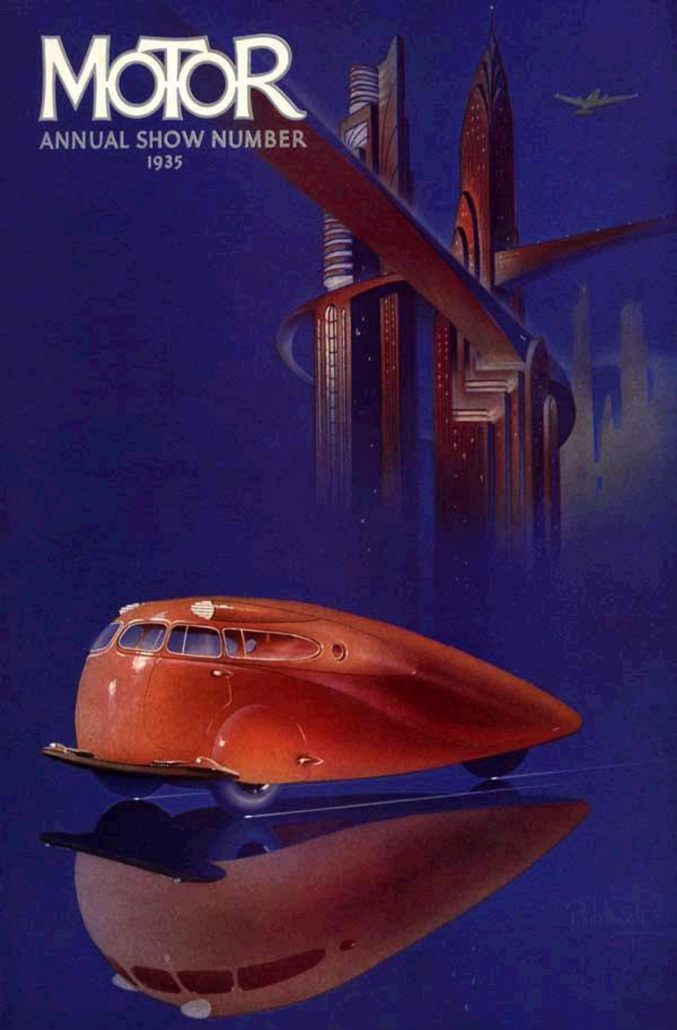
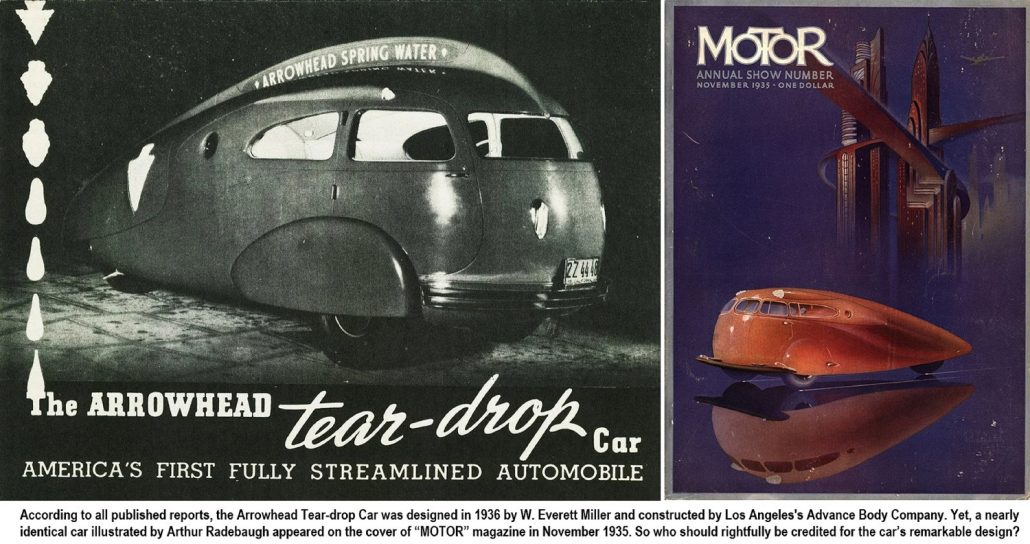
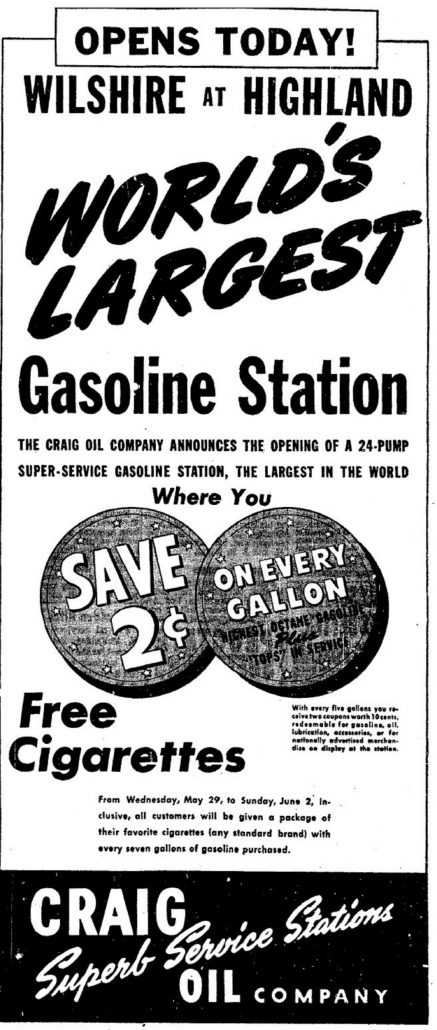

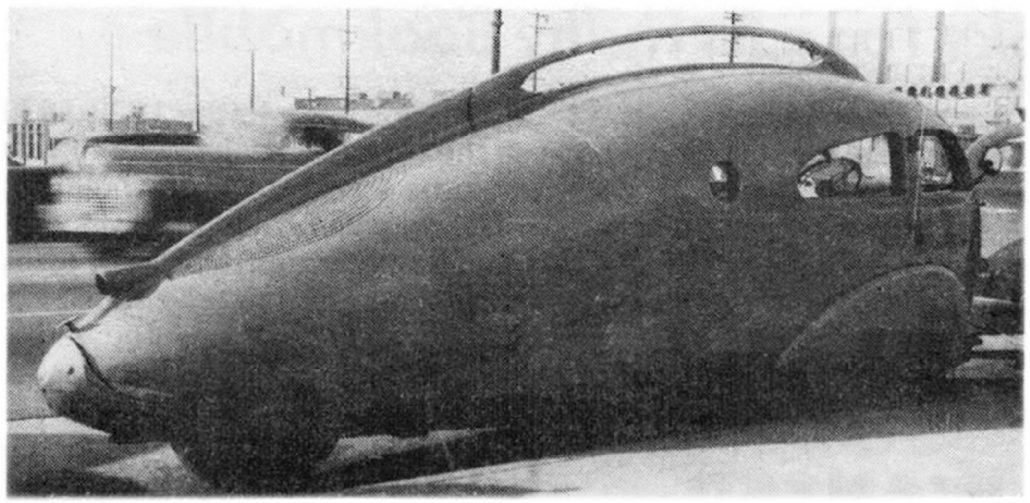

In re: Arrowhead Teardrop. It was repaired and restored in the late fifties. It was seen in the early sixties in Tennesee about the same time and in the same area as the last Hummingbird sighting I can find. There is an unsubstantiated rumor that more than one was built. I have found no evidence of more than one
Wow. I am actually starting drawings to make a copy……..And up pops this article
I realize this may be off topic, but I found an interesting article about another “StreamLiner” , the 1938 REO Tractor (?)
in an issue of “The Old Motor”:
https://theoldmotor.com/?p=148503
For what it’s worth. Cheers!
My grandfather was an amazing person and I loved going through the garage where he kept his library, once done with what I pulled out he knew exactly where to put them. He made my dad write a couple of articles for road and track. Sold his library to Blackhawk museum.
I bought many items from Mr. Miller over the decades, specifically old Jaguar stuff. I may have even gone through
his bins as a teenager at the old AutoRama days (every Thanksgiving weekend) at the Houston Astrodome.
Those were the days! His collection was incredible.
Yes, Blackhawk sold the W. E. Miller Archives to the Nethercutt Collection where they now reside!
Great article Geoff, you always provide some interesting reads. Keep up the good work and good luck to all with the hunt! Wondering if the Craig Service Station is still there?
@BigRedRivi….thanks for your kind words and wouldn’t it be fun if we found this new version of the Arrowhead Teardrop Car. The fact that it existed after the other one was destroyed gives me hope
Thanks for sharing your thoughts and keep the comments coming.
Best…
Geoff
Great article Geoff, you always provide some interesting reads. Keep up the good work and good luck to all with the hunt!
Mr Miller had a huge auto literature collection and was selling it in pieces at swap meets in the Los Angeles area. I purchased one of the Arrowhead folders, he had a stack of them for sale for $3.00. As a fairly new literature collector at that time I asked him about Duesenberg literature and he replied “By which body builder?” He had many auto show editions of Motor Magazines and a trunk load of Ford dealer books from the thirties which I was happy to buy at $10.00 each. This was in the 1970’s and one day he had invited one of the Duryea brothers to come with him and they were walking around the swap meet. Miller was very friendly and helpful to literature collectors.
My experiences with Mr. Miller happened in the 1960’s. Sometimes I forget how old I am!
Yes, according to my research, Miller had more than 3,000 pieces in his collection by 1935. He was nearly as well known for his literature as he was for his designs.
He sold his library to the Blackhawk museum.
I enjoy your website trendously. I’m South African, in my 70’s, and stil play with my workshop “toys” daily! I nver owned any of the kit cars and other interesting machines that you feature, but have builtand used a number of VW Beetle based beach buggies (similar to your Manx and other US built dune buggies. I still have a mint 1st gen Ford Explorer – 1994 LHD model; a bit of a rarity as all LHD vehicles here date to pre-2000; after that LHD vehicles could no longer be imported, or had to be converted to RHD to be legal.
I always look to see where other folks that are on-line live. Funny thing is that whenever I am viewing your site. Your tracking system records that someone from Plettenberg Bay or George is on-line. I now realize that that person can only be me, but I live in Port Elizabeth, 248 km east of “Plet” as we call it, and 323km east of George, at the southern tip of Africa. Just gor interest’s sake.
Keep up your splendid site! Regards
@Andre – thanks for the kind words and nice to meet you. Since you’re in South Africa you can help me find the lost Gatso hiding in South Africa I’m glad you like the Live Traffic Feed at the bottom of the website. I noticed that my “location” changes every few weeks but usually within 20 miles of my house. If I use my cell phone, it sometimes shows a few hundred miles away. Technology is beyond my grasp…..Glad you like what we do and keep the comments coming. Best, Geoff
I’m glad you like the Live Traffic Feed at the bottom of the website. I noticed that my “location” changes every few weeks but usually within 20 miles of my house. If I use my cell phone, it sometimes shows a few hundred miles away. Technology is beyond my grasp…..Glad you like what we do and keep the comments coming. Best, Geoff
I’m just not willing to accuse Miller of “borrowing” the Radebaugh design without definitive proof. Especially since teardrop body shapes were somewhat commonplace in that era. I’ll admit it looks suspicious. However, having been a designer, I know how easy it is to independently and innocently conceive something that has already been done. There’s nothing new under the sun.
Hey Scott, thanks for adding your voice to the discussion. I really appreciate your perspective, as it sounds like we share similar career paths and experiences. To be clear, I’m not accusing Miller of plagiarism or anything unethical, since I have no idea if discussions took place between Miller’s Advance team and Radebaugh’s editors at Hearst Publishing. I’m just unable to chalk this one up to the happenstance of two talented designers independently arriving at the exact same solution. As a 45-year career designer myself, I appreciate your observations about evolutionary groupthink that causes multiple people to innocently arrive at similar designs. And I agree that the tear drop shape, the rear engine placement and the three-wheel configuration actually WERE the natural application of streamlining concepts as they had evolved at that time — and other designers incorporated those elements. However, the likelihood that these two designs were independently hatched is, in my mind, nullified by the mutual incorporation of so many unique elements: windows placed within a cove above the belt line; spear-like driving-light pods mounted above the windows within the cove; small port holes aft of the rear side windows; and ‘S’-shaped belt lines that swooped from the window coves down the body sides to the tip of the tail. Then again, my interpretation of the facts is based solely on the evidence I’ve found so far and I’m eager to learn new details that take me in an entirely different direction. After all, Undiscovered Classics is all about independent thinking and expecting the unexpected, since that’s what leads to our many discoveries! Again, thanks for sharing your thoughts on the Arrowhead, and please keep your comments coming on future stories!
Interesting article and car design. When I think of 3-wheel vehicles, I think the English Morgan. When I think teardrop, I think Buckminster Fuller. As the article pointed out there were many designs though. The cover of “Motor” magazine is simply awesome work!
The designers had to know how unstable the car was, and as Jay says above, the crash was not totally unpredictable.
I hope it turns up sometime! Thanks for the article.
So, looking at the diagram of the steering assembly, this would have been front wheel drive? I wonder if a rear-engined (well, rear mid-engined actually) front wheel drive car is unique in the annals of Lost Causes of Automotive Design? Then add in “that steered like a forklift” for good measure. The crash photo looks like the aftermath of a rollover, not entirely unpredictable given the design. Would have been a fabulous sight in its day tho, for sure.